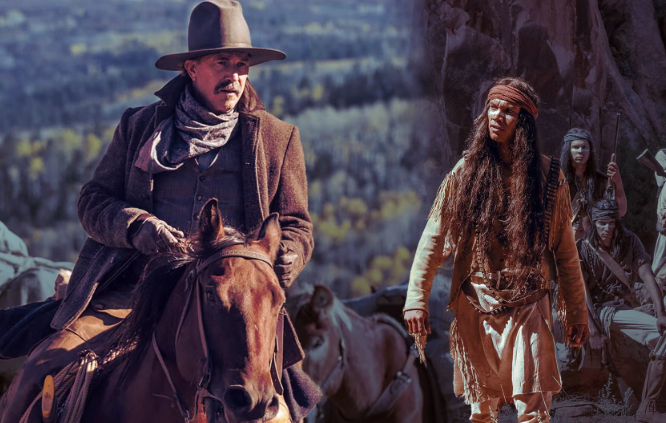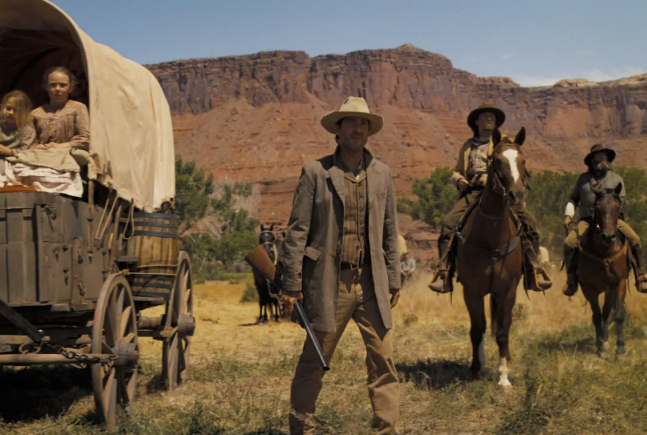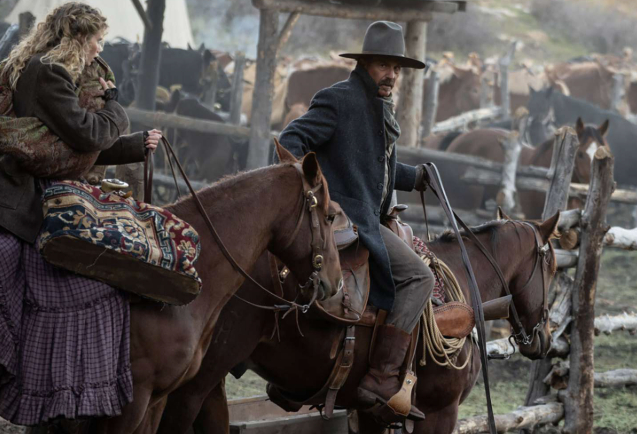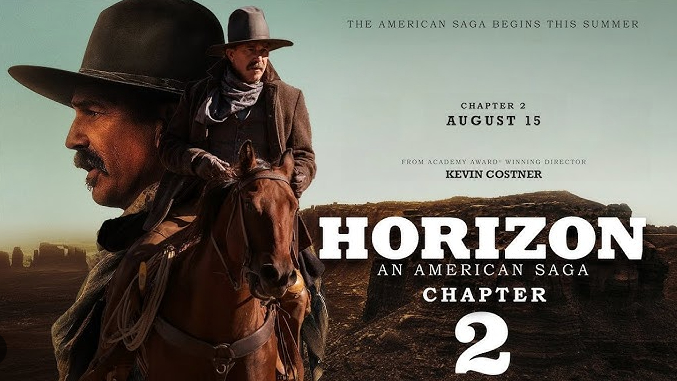Horizon: An American Saga – Chapter 2 (2024)
I. PLOT OVERVIEW
In Chapter 2 of Kevin Costner’s ambitious Western saga, the story continues to sprawl across time, land, and lives, following multiple threads that reflect both the promise and peril of westward expansion in post–Civil War America. Set against the backdrop of rugged landscapes and growing tensions, the film picks up where Chapter 1 left off—drawing characters deeper into the unforgiving heart of the frontier.
Frances Kittredge tries to rebuild her life after personal tragedy, Juliette Proctor endures a brutal passage with her wagon train, and the town of Horizon continues to take shape amidst conflict and lawlessness. At the center of it all is Hayes Ellison, a frontier enforcer navigating both moral ambiguity and increasing violence as the town edges closer to chaos. Meanwhile, new storylines emerge—including desperate settlers, soldiers, and Native families—all converging in a land too vast for order, too fractured for peace.
Unlike its predecessor, Chapter 2 brings more momentum, more personal stakes, and sharper emotional weight, though it still resists tying all its threads together. This is storytelling with patience, where every choice lingers and every frontier mile feels earned.
II. THEMES AND PHILOSOPHY
Chapter 2 deepens its focus on the themes introduced in the first film—displacement, sacrifice, moral compromise, and the myth of American progress. It challenges the romanticism of the West by showing lives torn apart as easily as land is claimed. The struggle to build a home or a town is constantly interrupted by violence, greed, and the ghosts of war.
Characters are caught between survival and justice, between duty and freedom. The film also explores gender and trauma more intimately—especially through Juliette and Frances, who must navigate a world that affords them little protection, even as they show unrelenting resilience.

The West is not painted as a place of glory but of trial. Here, the journey isn’t about conquering nature—it’s about enduring it. Civilization and savagery walk side by side, and the most noble intentions often lead to the darkest outcomes.
III. CHARACTERS AND PERFORMANCES
Kevin Costner steps back somewhat in this installment, allowing other characters to take center stage. His portrayal of Hayes Ellison remains stoic yet burdened, a man torn between justice and futility. His scenes are fewer but impactful, especially when confronting the limits of what one man can do in a land built on blood and ambition.
Ella Hunt’s Juliette emerges as a standout, enduring the unrelenting horrors of the trail while never losing her dignity. Her transformation from hopeful traveler to hardened survivor is one of the film’s most affecting arcs. Sienna Miller’s Frances Kittredge, haunted by her past, anchors the emotional tone of the settlement storylines, trying to raise children and hold onto identity in a world that keeps tearing away everything she builds.

The supporting cast—soldiers, outlaws, pioneers—each add layers to the film’s intricate mosaic. No one is simple. No one is safe. And every choice carries weight, echoing far beyond the screen.
IV. CINEMATOGRAPHY AND DIRECTION
Visually, Chapter 2 is as breathtaking as it is oppressive. The vast American landscape—shot with reverence and weight—feels both majestic and isolating. Mountains, plains, dust storms, and rivers create a living environment that constantly tests those who walk through it. The land is not just setting—it is character, obstacle, and destiny.
The cinematography is patient, favoring long takes, wide shots, and earthy color palettes. The pacing is deliberate, allowing each moment to breathe. Some scenes unfold in quiet tension; others explode with sudden, unflinching violence. Director Kevin Costner leans into realism—focusing on cause and consequence, not spectacle.

Sound design also plays a key role. Silence is used as powerfully as music. The quiet creak of wagons, the distant thunder of hooves, and the crack of gunfire punctuate the film’s emotional rhythm. The score is restrained but haunting, echoing the sadness of dreams lost to time.
V. STRUCTURE AND STORYTELLING STYLE
Rather than relying on a singular narrative, Chapter 2 continues to interweave multiple storylines. Some progress meaningfully; others remain suspended, building tension for future chapters. The film resists conventional climaxes or resolutions—it is more about accumulation than payoff.
This structure, while bold, may feel fragmented to some viewers. But it serves the vision of a grand American chronicle—a world in which lives rarely intersect neatly, and history unfolds in uneven, jagged strokes. Each character is on a different timeline, but all are pulled by the same gravity of a land that demands sacrifice.

The dialogue is restrained, often quiet and measured, reflecting the stoicism of frontier life. Emotional outbursts are rare, making them more powerful when they do erupt. The film trusts its visuals and performances to speak volumes with minimal exposition.
VI. OVERALL IMPACT
Horizon: Chapter 2 is not about resolution—it’s about immersion. It’s an experience meant to settle into your bones, not just your brain. While its deliberate pacing and sprawling structure may not appeal to everyone, its ambition is undeniable. It respects its characters, its setting, and its audience.
Kevin Costner is crafting a saga that doesn’t just tell a story—it builds a world. One chapter at a time, we witness the cost of a nation’s foundation—not in terms of ideology, but in blood, pain, love, and loss. This is cinema that asks you to sit with discomfort, to dwell in spaces where easy answers don’t exist.
FINAL VERDICT
Horizon: An American Saga – Chapter 2 is a somber, textured, and beautifully filmed continuation of a vast narrative vision. It may not provide closure, but it offers something rarer: a commitment to truth, scale, and storytelling without shortcuts.
Rating: 8.2 / 10
A contemplative epic that unfolds with the gravity of history and the sorrow of dreams deferred. For those patient enough to listen, the frontier still has much to say.
